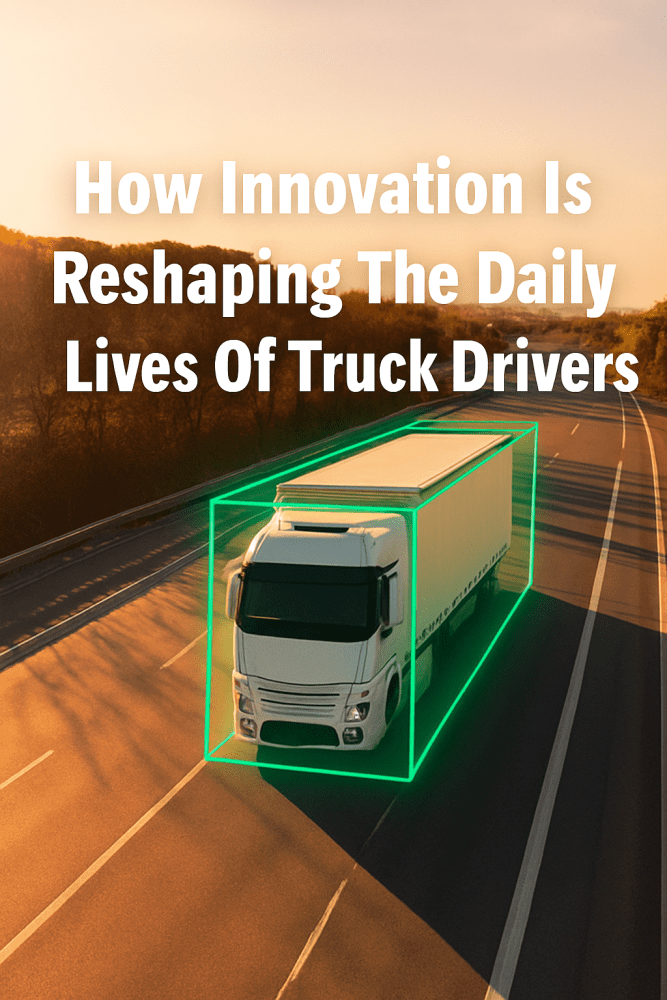In the modern world, when a truck driver glances at his dashboard, he sees a warning: heavy traffic 20 miles ahead. Time to reroute.
That’s trucking today, and it’s nothing like it used to be.
Paper logbooks? Gone. Guessing when your truck needs maintenance? Ancient history. Wondering if you’ll find parking at the next rest stop? Your app already knows.
Technology has crashed into the trucking industry like a wave, and it’s making everything faster, safer, and a lot less stressful for drivers. From GPS that actually understands truck routes to sensors that catch problems before they leave you stranded, modern truckers have tools their predecessors could only dream about.
Let’s look at how tech is changing the day-to-day reality of life on the road, and why today’s drivers wouldn’t go back to the old ways for anything.
1. Smarter Navigation for Smoother Journeys
Do you recall when drivers had to use radio directions or written maps? Those days are over. Now, AI-powered GPS navigation systems that determine optimal routes are helping truckers save fuel, avoid delays, and find the best paths.
It’s no surprise that recent OTR driver news and other media outlets highlight how fleets are adopting smart navigation. Today’s fleet management software does more than show routes. They also analyze real-time data, such as traffic patterns, weather, and road conditions.
Some even suggest areas that fit into drivers’ plans for breaks, gas stops, or meals.
Another secret? These new technologies can save travel time by up to 20%, helping drivers get to their destinations faster while still prioritizing safety. Every trip is now easier and less stressful thanks to navigation technology, which acts as a dependable co-pilot.

2. The Rise of Digital Documentation
Gone are the piles of paperwork that once cluttered truck cabins. With just a tap on a tablet, drivers can now do everything from generating delivery receipts to creating inspection reports.
Every day, truckers use apps to transform how they do business. They help with compliance reporting, monitor loads in real time, and make communication with dispatchers easier.
The best part is that digital documentation reduces administrative time by about 40%, allowing drivers to spend more time on the road and less time filling out forms.
3. Comfort and Safety Technology Inside the Cabin
In the past, the primary concern with truck cabins was their longevity. However, they are now constructed to be comfortable. Adding features such as climate-controlled seating and voice-activated technology to the truck cab is making it a more relaxed, high-tech place to work.
Many new trucks feature ergonomic designs, memory foam seats, and adjustable lighting to help keep drivers awake on long trips. With Wi-Fi and advanced entertainment systems, drivers can stay connected and comfortable wherever they are.
Digital safety is equally important. Thanks to innovations like lane departure warning systems, collision avoidance systems, and adaptive cruise control, there have been a lot fewer accidents.
Studies in the field show that safety-assist technologies can cut the risk of accidents by up to 45%. That’s a sense of calm that no driver can put a price on.

4. Predictive Maintenance and Smart Diagnostics
Do you recall how a breakdown on the highway might spoil your whole day? It’s not like that anymore, as predictive maintenance solutions can help you avoid most problems before they happen.
Modern trucks have IoT sensors that continuously monitor parameters such as engine temperature, tire pressure, and brake wear. These technologies deliver alerts immediately to drivers or fleet managers if something needs to be rectified.
There’s even more. Depending on how the system is used, AI-powered predictive analytics might even be able to predict potential failures. This helps companies plan maintenance when the system is down, rather than when it’s on the road. The result? Less stress, fewer delays, and lower costs for maintenance.
5. Connectivity and Real-Time Communication
Good communication is the heart of a successful vacation. Telematics and cloud connectivity enable truck drivers to stay in constant communication with dispatchers, logistics teams, and clients.
You can receive real-time alerts on route changes, delivery confirmations, and weather warnings with these tools. Drivers can even get real-time feedback on how well they are doing and safety tips, which help them improve and stay up to date with best practices.
Also, the connection enables the entire fleet to operate together, ensuring that every vehicle runs smoothly and every driver feels encouraged.

The Future of Trucking: Where Innovation Meets Humanity
Technology has undeniably reshaped trucking — but it hasn’t replaced the human element. In fact, innovation has elevated the role of truck drivers, making it more respected and rewarding.
Drivers now have greater freedom, better means to talk to each other, and a better work-life balance. Because of modern technologies like bright cabins, AI help, and eco-friendly vehicles, the job has shifted from one that required a lot of physical exertion to one that demands a lot of skill.
We can expect trucking to get smarter, roads to get safer, and the future to be more sustainable as technology gets better.
Conclusion
So, how does innovation change the way truck drivers live their lives daily? In every way you can think of, such as better navigation, predictive maintenance, electric trucks, and being able to talk to each other in real time.
Trucking is becoming a tech-based job where comfort, safety, and efficiency are all vital. New technology makes every mile driven today easier, greener, and more potent for the driver.
Technology helps things move forward, but truck drivers are the ones who really keep things rolling.
Looking for Travel Inspiration?
Explore Textify’s AI membership
